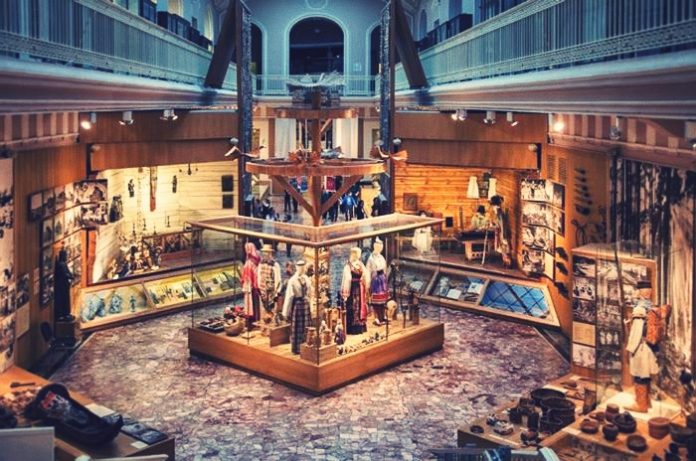June 3rd, 2020 marks the 97th anniversary of the opening of the Russian Ethnographic Museum in St. Petersburg. Below are ten facts about this unique museum.
- The funds of the Russian Ethnographic Museum comprise more than 500 thousand exhibits. These exhibits represent the culture of 157 large and small peoples inhabiting Russia.
- Initially, there was no separate ethnographic museum as such – it was part of the Russian Museum. The founder of the ethnographic department of the Russian Museum is Nicholas II, and the initiator of the discovery was a traveler, ethnographer, and artist Samuel Dudin.
- The ethnographic department of the Russian Museum was not initially open to public access, this happened only in 1923. In 1934, the museum became an independent unit.
- A year after the opening of the museum for free access, in 1924, during the flood, more than 100 thousand exhibits were flooded in the basements. The restoration of the premises and exhibits took five years.
- The second time the museum was seriously damaged was during the Great Patriotic War. At this time, it was on the verge of complete destruction – at least four times the building fell under bombardments, and one of the shells exploded in the main gallery. After the war, the museum was mothballed, restoration lasted almost 15 years.
- The marble hall of the Ethnographic Museum is a masterpiece of architectural and engineering art. The height of the arch in it is 17 meters, the ceiling blocks lie on 28 columns, the weight of each is more than 20 tons. The entire lower level is a 96-meter high relief, where each sculpture of 183 growth figures is a representative of a particular nation.
- The museum has a special department, which was called the “safe room”, “armored pantry”, and is now called the “special, golden pantry.” The pantry is designed to store extremely valuable exhibits. For example, gifts to the Romanov dynasty sent from all corners of the empire. Here you can see Tatar khan’s gold, Murmansk pearls, and Uzbek turquoise, as well as attributes of Buddhist cults, weapons of Caucasians, and much more.
- The ethnographic museum has a collection of 3 thousand items belonging to the mysterious Ainu tribe. This is a tribe that lived in Kamchatka, Sakhalin, and the Kuril Islands. This is the largest collection in the world dedicated to these people.
- In 2004-2005, the museum organized a large-scale expedition “From the White Sea to the Bering Strait.” Within its framework, ethnographers visited hundreds of semi-forgotten and inaccessible settlements and natural sites.
- It is noteworthy that now the museum is also a learning center. The institution has a school of crafts, where you can try yourself as a potter, seamstress, artist, and see the creativity of people in Russia. Also, informative lectures, concerts, and competitions are held here.




